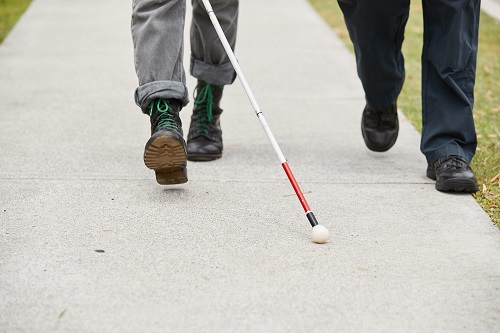New research is underway to better understand how the increase of electric scooters and similar vehicles on footpaths has impacted Australia’s blind and low vision community.
Vision Australia has recently launched a new survey into the impact the proliferation of e-scooters and other “rideable” vehicles has had on the ability of blind and low vision pedestrians to navigate footpaths and other public places.
“It’s an issue we’ve been monitoring for some time and we certainly think there’s room for improvement around the regulation of electric scooters and similar vehicles, particularly around their use on footpaths,” Chris Edwards, Vision Australia manager of government relations and advocacy, said.
“We don’t believe these sorts of vehicles should be allowed on footpaths at all. We’re talking about vehicles that can travel up to 50km/h being ridden on footpaths by people with no formal training or licensing,” he said.
Chris said the presence of these vehicles on footpaths puts pedestrians who are blind or have low vision, or who with other mobility issues, at risk of a collision that could result in serious injury or worse. Even near misses can have a huge impact.
“We should be confident that our footpaths are a safe environment. The presence of these vehicles greatly reduces that confidence and the ability of people who are blind or have low vision to be active and independent in their community.”

Caption: Vision Australia is keen to understand how electric scooters and similar have impacted pedestrians who are blind or have low vision.
Even stationary electric rideables can pose a hazard, as seen in cities like Canberra and Brisbane that have adopted shared e-scooter schemes.
“The shared schemes pose a different issue in that when people finish with a scoter they’re often just left in the middle of a footpath. This again creates an environment where people who are blind or have low vision can’t be confident that footpaths are free of dangerous hazards.”
While footpaths should be free of these vehicles, Chris said Vision Australia is not calling for a blanket ban.
“If these vehicles are regulated properly we’re open to them being used on shared pathways where pedestrians and cyclists already mingle.
“There still needs to be considerations around the speeds these vehicles travel at, as well as ensuring all pedestrians can easily understand if they’re using a shared path, rather than a footpath.”
The Vision Australia footpath safety survey is open until September 30.










